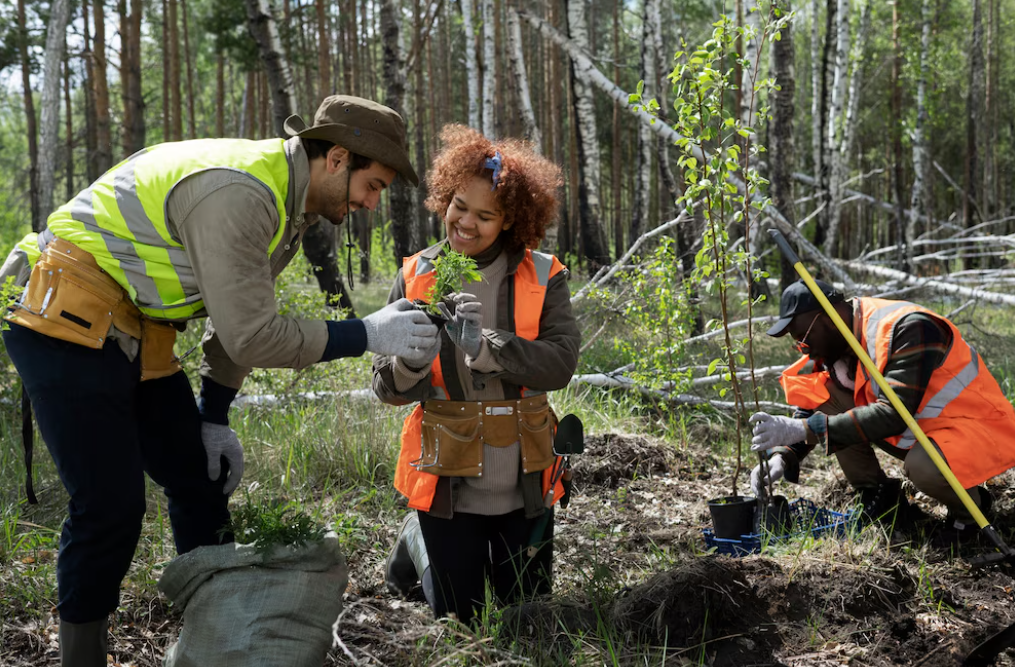Wildlife Conservation Methods
The term “wildlife conservation” refers to a variety of methods and plans used to save species and their natural environments, which together comprise the many ecosystems that make up our world. The creation and administration of protected areas, such as national parks and wildlife reserves, is one strategy for the protection of wildlife.
Importance of creating protected areas
For many different species, these places provide a safe sanctuary where they may flourish unaffected by human influence or habitat degradation. Conservationists can guarantee the long-term survival of animal populations by enforcing stringent restrictions and conducting monitoring operations inside these protected regions.
Community Involvement in animal protection
Promoting sustainable methods for managing land and resources is a crucial approach to animal conservation. This entails collaborating closely with stakeholders and the local community to create plans that strike a balance between the demands of people and the protection of animal habitats.
Benefits of engaging communities in conservation projects
Conservationists may help reduce the detrimental effect on animals while also sustaining local populations’ livelihoods by promoting eco-tourism, sustainable agriculture, and ethical logging practices. Furthermore, putting policies in place to lessen pollution and combat climate change may be very important for safeguarding species and their habitats.
Educating the public about wildlife conservation
Campaigns for awareness and education are also essential components of animal conservation initiatives. Conservation organisations may motivate people to take action and make decisions that support conservation efforts by educating the public about the value of biodiversity and the risks affecting species.
Various educational programmes and initiatives aimed at raising awareness
These efforts may include informational campaigns via different media outlets, community outreach programmes, and instructional programmes in schools. We may promote a group effort to preserve and safeguard our natural heritage for future generations by encouraging a sense of duty and care for animals.

Strategies for animal conservation and maintaining variety of habitats
The technique of safeguarding and maintaining the variety and natural habitat of different animal species is known as wildlife conservation. It entails putting different plans and tactics into action to guarantee the survival and welfare of animal populations. Some of the most important global strategies for animal conservation will be discussed in this article.
National parks and protected areas
The creation of national parks and protected areas is among the best strategies for the preservation of wildlife. The preservation of the natural environment and its people is the main reason these places have been identified and are being maintained. Wildlife may flourish in protected places because they are sheltered from the danger of human meddling.
Stronger protections for wildlife
Strict rules are put in place within these protected zones to stop things like logging, hunting, and habitat devastation. This guarantees the survival of endangered species and contributes to the upkeep of a balanced environment. Additionally, national parks are essential for advancing knowledge and increasing public awareness of the need to protect species.
Wildlife conservation projects for habitat Restoration
Another crucial strategy for protecting species is habitat restoration. It entails restoring damaged or destroyed habitats to their natural form so that animal populations might rebound and flourish. This may be accomplished by a number of methods, including erosion control, wetland restoration, and reforestation.
The significance of preserving natural habitats for wildlife
We provide animals with vital resources like food, shelter, and breeding grounds by restoring ecosystems. For species that are highly specialised and habitat-dependent, this approach is especially important. Not only does habitat restoration help species, but it also makes ecosystems healthier and more resilient overall.
Wildlife Corridors to travel between various environments
Natural habitat is divided into linear strips called wildlife corridors to link disparate locations. They provide for gene flow and the preservation of genetic variety by acting as corridors for species to travel between various environments. In environments where human activities like agriculture or urbanisation have severely fragmented the landscape, wildlife corridors are particularly crucial.
Establishment of protected corridors
Wildlife corridors lessen the negative effects of habitat fragmentation, such as isolation and restricted access to resources, by allowing safe travel. They are also essential for maintaining the long-term survival of species and avoiding inbreeding. Protected corridors may be established, native vegetation can be restored, or current landscapes can be altered to create wildlife corridors.
Wildlife Monitoring and Research
A comprehensive knowledge of the species and habitats being preserved is necessary for effective wildlife conservation. Research and monitoring of wildlife are essential for obtaining important information on population dynamics, behaviour, and habitat needs.
The role of research and monitoring in wildlife conservation
Researchers may learn more about the migratory patterns, habitat utilisation, and movements of animals by using cutting-edge technology like satellite photography, GPS monitoring, and camera traps. This information is useful for deciding on appropriate conservation measures, carrying them out, and determining how successful conservation plans are.
Community Engagement and Education programmes
Effective animal protection relies heavily on community involvement and education. Engaging local people in conservation activities guarantees the long-term viability of conservation programmes while also fostering a sense of ownership and responsibility.
Conservation Education
Activities like environmental education, capacity development, and revenue-generating initiatives that support sustainable lives may all be part of community-based conservation programmes. These initiatives lessen conflicts between people and animals and promote good attitudes towards wildlife preservation by increasing public understanding of the value of wildlife and the significance of conservation.
Techniques for protecting wildlife are essential to maintaining the extraordinary variety of animal species on Earth.
Survival and welfare of animal population
A number of factors, including wildlife corridors, protected areas, habitat restoration, community involvement, monitoring, and research, all help to make conservation efforts successful overall. We can guarantee the survival and welfare of animal populations for future generations by putting these strategies into practice.
